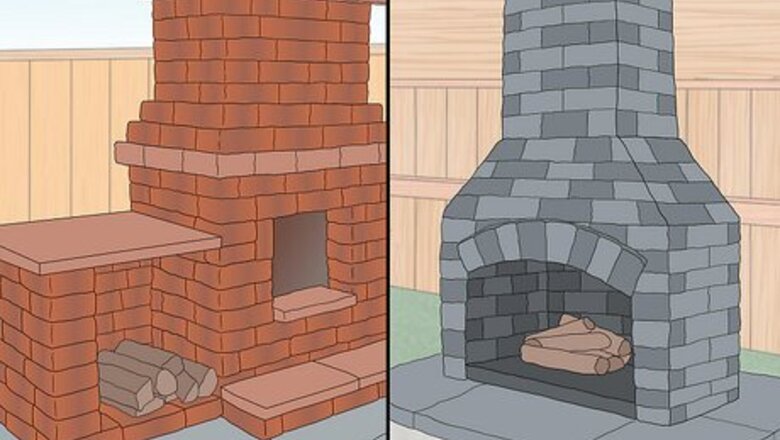
views
Planning the Basics
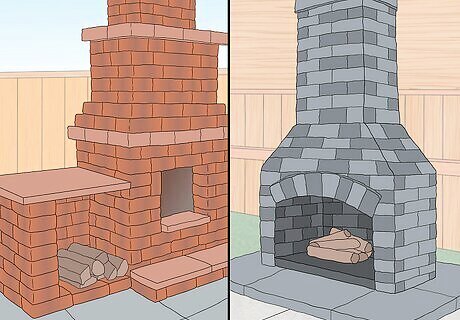
Consider what purpose you want your outdoor fireplace to serve. Reasons for building an outdoor hearth vary, but whatever yours are, you will want to consider certain elements to bring your project to a successful conclusion. Ambience: Fireplaces can set the mood. A cozy open hearth provides an intimate setting for small groups. If you throw large parties, consider building a fireplace with two open ends to accommodate more people. A fire pit provides views from all vantage points and the feel of a campfire setting. Functionality: You can build a fireplace that also serves as a barbecue or pizza oven, but these designs are very complex. Also consider any electrical installations you may need to hide behind the fireplace, including lighting or audio/visual cables.
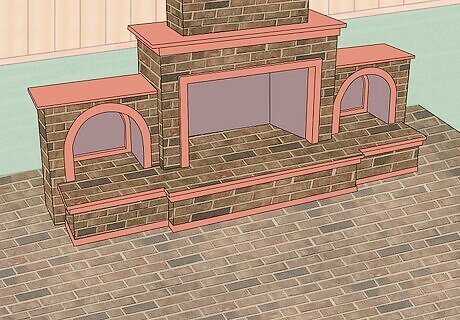
Consider the design of the hearth. Many homeowners match the stonework of their fireplace to the stonework of their residence, although it's not mandatory. Brick offers a more traditional stone façade, while man-made stacked stone gives the hearth more of a contemporary look. If you don't want to go for a stone exterior, stucco is also a popular option.
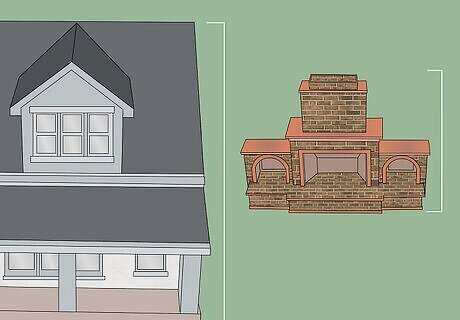
Determine the size of your fireplace. The size of your fireplace should be scaled to its surroundings. Consider whether you want your fireplace to be the focal point of your back yard, or to complement an already-stunning vista. Try to design the fireplace with proportions in mind. You don't want your fireplace to completely overshadow the size of your house; nor do you want the fireplace to be dwarfed by your home. Locate the fireplace in its own space to create another "room" in your outdoor living space. Allow plenty of space in front of it for family and friends to gather around and enjoy.
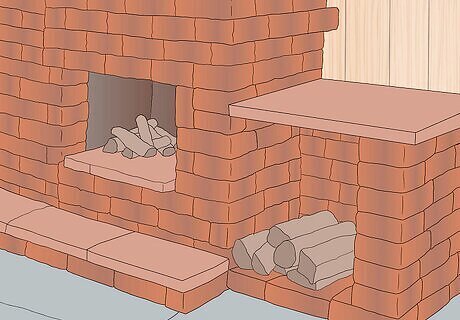
Look into wood-burning fireplaces. Most outdoor fireplaces are either wood-burning or gas. A wood-burning fireplace offers the attraction of a more "natural" fire. However, they usually require a building permit. Contact your municipal government about setback restrictions, chimney specifications, and other requirements. The city will issue a permit to allow you to begin construction, then inspect the result and grant permission for you to use it.
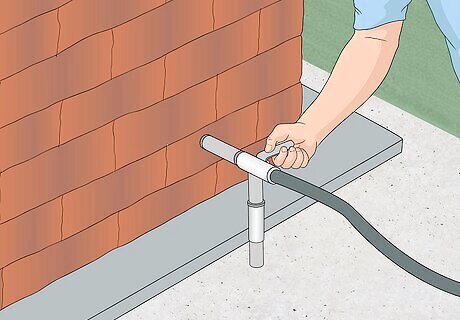
Hire a contractor for a gas fireplace installation. Gas fireplaces burn cooler but cleaner than their wood-burning counterparts, with little if any ash, embers, and smoke. Hire your gas supplier or a licensed gas contractor to safely connect the fireplace to your gas line. Check local codes for specifications on gas piping. Many areas require black iron pipes rather than regular steel or galvanized materials.
Choosing a Design
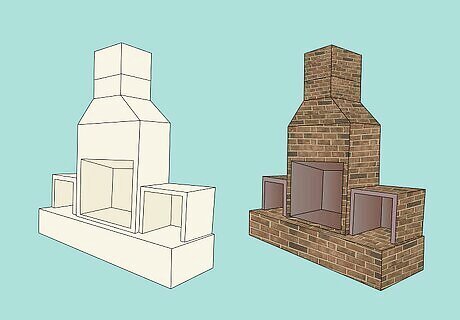
Choose a fireplace kit for ease of assembly and efficiency. Fireplace kits really run the gamut, ranging from simple affairs to ornate pieces, replete with all the bells and whistles. The great thing about fireplace kits is that you can usually opt for a wide variety of styles that will fit your budget. Got a smaller budget? No problem, there's a kit for that. Working with a bigger budget? The sky is almost literally the limit.
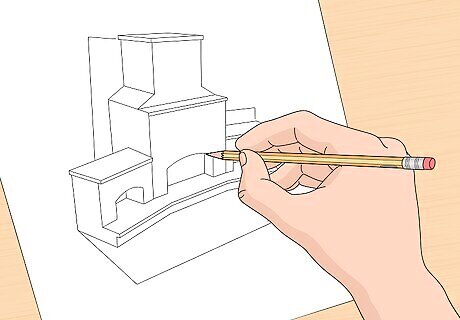
Find a different design. If you're an experienced home builder, you don't need to limit yourself to a kit. It's still best to stick to a proven build, but you can start with plans you find online and make small alterations. Most DIY designs employ cinder blocks or another sturdy, economical material as the skeleton. The skeleton is then covered with stone or another veneer stone after the cinder block is laid. Consider the three main elements of your outdoor fireplace when choosing a design: Base: A reinforced concrete base is the best base you can have for a fireplace. Custom fireplaces are usually heavier than prefab fireplaces, meaning your base needs to be stronger and thicker than ordinary. Firebox: Your firebox will house the fire, and should sport fire brick if custom built. On the other hand, you can purchase a firebox (choices of material include stainless steel and other types of brick) if you don't want to build it yourself. Chimney or Vents: A wood-burning fireplace will require a chimney with a spark arrestor, while a gas-lit fireplace will only require vents.
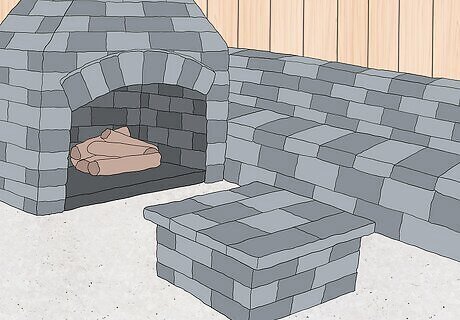
Plan on adding any additional features to the fireplace area. Your fireplace doesn't merely need to be a hearth. In fact, if you're building an outdoor fireplace, it makes sense to outfit it with other uses or aesthetic furnishings. Consider: Built-in seating. Warming yourself by the heat of the hearth is a real treat, so why not build seat walls as an extension of the fireplace itself? It looks wonderful and adds instant charm to any outdoor fireplace. Wood storage. Convenient if you're building a wood-burning fireplace, a compartment or space for wood will make stoking the fire easy and painless.
Building the Fireplace

Pour the concrete for the foundation, if you haven't already. Set up the foundation first by digging a trench and using a plate compactor to shore up the foundation. Mix and pour the cement and allow it to set for at least 24 hours, if not longer. Check with local building authorities to see how low you'll need to dig your foundation. Some locations will need foundations of concrete only 6 inches (15.2 cm) deep, while others will need to be in excess of 1 foot (0.3 m). Note: Concrete and mortar, although similar, are different bonding agents and should be used differently. You'll use the concrete to lay a foundation, if necessary, and the mortar in order to bond concrete or cinder blocks together.
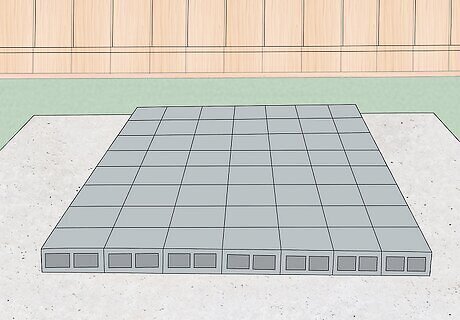
Spread mortar onto the foundation and begin laying your concrete or cinder blocks. Follow the building plans precisely, making sure that each row of blocks is level. When creating the base, be sure to use a level in order to ensure a balanced placement of the concrete or cinder blocks. If building using cinder blocks, spread mortar in between each row, as well as in between individual pieces of cinder block.
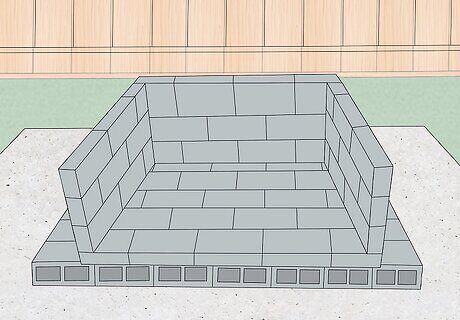
If necessary, lay out your fire brick inside your firebox. Fire brick should take special care when installed inside a firebox: Laying a pleasing-looking pattern and mixing the right mortar is an important consideration. Choose a nice inlay pattern with which to set the fire brick. A running bond pattern works nicely in a firebox. Find the center of the firebox and trace a line all the way to the face of the firebox. Place a fire brick immediately to the left and to the right of the bisecting line, flush against the face of the firebox, leaving about ⁄4 inch (0.6 cm) space in between the two. Lay one brick immediately above the two bricks, offsetting it by placing it exactly in the middle. Above it, lay down two bricks in the same pattern as originally placed. Mix your mortar with high-temperature mortar. This way, the high temperature of the fire won't compromise the mortar that's holding the fire brick together. When laying down the brick, cut it as necessary at corners and edges. While you should be able to get by without having to cut the center pieces of the firebox, corners and edges will force you to the fire brick down to size.

Remove any air bubbles from the fire brick mortar with a jointer and a brush. Pack in the mortar in each seam with a jointer. Then, dust away any excess mortar with a clean brush, leaving your firebox to dry to at least 24 hours.
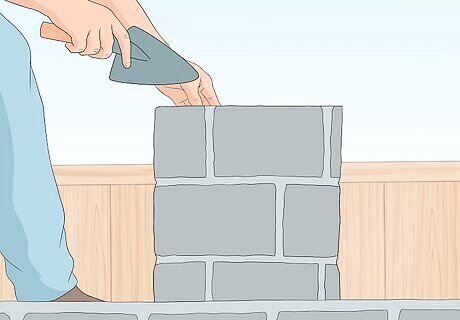
Construct or add a chimney for wood-burning fireplaces. The chimney must be built to exact specifications to ensure proper draw of the smoke from the firebox. It must have a smoke shelf to reduce down-draft and a flue of optimum dimensions. It's best to follow local building codes, but you can start with these typical standards: Measure the width and height of the fireplace opening to get its area. If the chimney is under 15 ft (4.6 m) tall, make its cross section 1/8 the area of the fireplace opening. If the chimney is over 15 ft (4.6 m) tall, make its cross section 1/10 the area of the fireplace opening instead. The chimney must also be at least 2 feet (0.609 m) higher than any adjacent structures, and 10 ft (3 m) away.
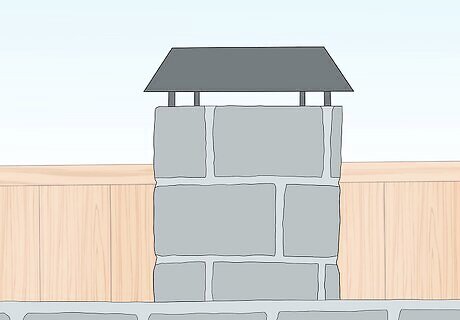
Add the spark arrestor. Like chimneys, spark arrestors are exclusive to wood-burning fireplaces. They trap embers from the hearth.
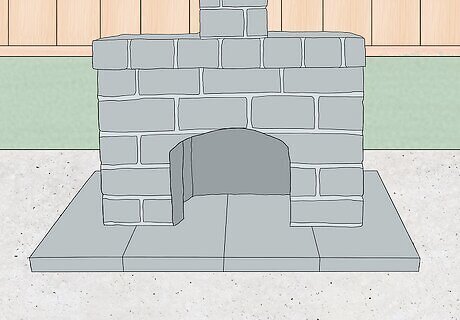
Install the hearthstone. The hearthstone is the lip of your fireplace opening, perhaps the focal point of your outdoor fireplace. This should be at least 10 ft (3 m) away from all other structures and from any overhanging objects such as patio roofs and pergolas. Installing it correctly is an important part of building an outdoor fireplace: Choose a hearthstone made from completely fireproof materials, at least 4 inches (10 cm) thick. It should extend at least 16 inches (41 cm) in front of the firebox and 8 inches (20 cm) on either side. If the firebox opening is larger than 6 square ft. (0.56 m), extend the hearthstone to at least 20 inches (51 cm) in front and at least 12 inches (30 cm) on either side. Place mortar in three 3/4-inch (19 mm) deep strips, 1 inch (2.5 cm) from each other. Set down the hearthstone, using a rubber mallet and level to make sure that it's plumb and level. If the hearthstone isn't flush with the firebox, that's okay. This will make it harder for any sparks to fly out of the front of the firebox.
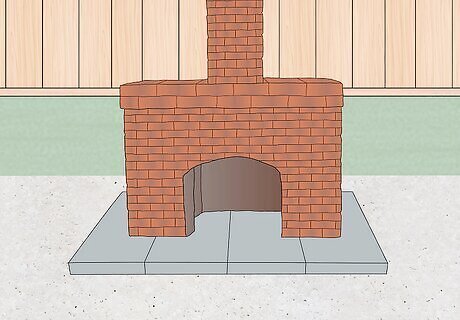
Select a stone style for the veneer. Apply mortar to the back of the stones and stick them onto the cinder blocks. Use spacers to separate stones, filling in the area between them with mortar. At perfect 90 degree corners, avoid continuous joints that travel all the way down the length of the fireplace. Instead, tooth them. Place the first stone flush on a corner, and then bring another stone out an inch or so to meet it. With the next two stones, alternate the joint: Bring the first stone out, and then place the second stone flush on the wall. This creates an attractive-looking alternating pattern running down the corners of the fireplace. Once laid, allow the mortar at least 24 hours to harden. If possible, give the fireplace several days of rest before attempting to use.
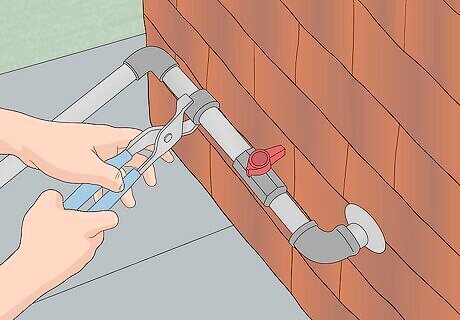
Connect your gas-burning fireplace to the gas line. If building a gas-burning fireplace, prepare to hook up gas to your fireplace in order to get it working. Turn off the gas. Use plumber's putty on the threads of the main line to connect it to the flexible lines. Tighten the connection with a wrench until the fitting seats. Test the connection by spreading dishwashing soap on it. Turn on the gas. If bubbles appear, refit the connection.
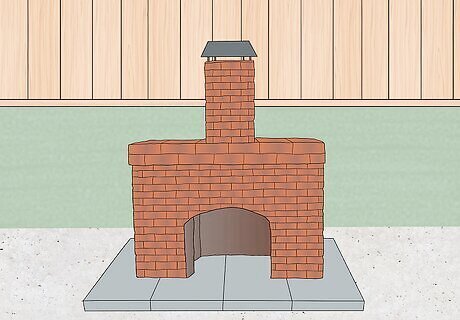
Finished. You've successfully added value to your home, revitalizing your backyard. Enjoy your new outdoor fireplace!




















Comments
0 comment